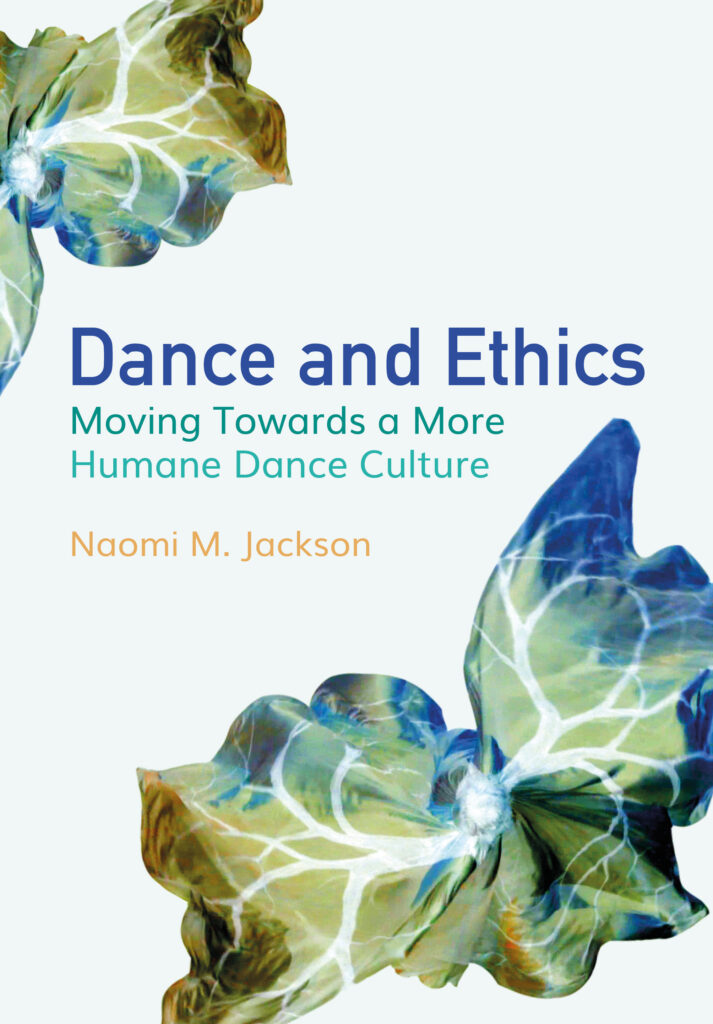[ad_1]
An tailored excerpt from the e book Dance and Ethics: Shifting In direction of a Extra Humane Dance Tradition, which considers moral points throughout the area and historical past of Western dance.
At its most profound, ethics asks how we should always dwell. The place is the road between proper and improper? What does it imply to be a superb human being and create a superb society? The query is one in all ought versus is. Simply because one thing has been a sure means for lots of of years will not be a justification for its continuance.
Within the case of the dance area that is particularly related. Whereas dance is an thrilling and huge area with many alternative aspects, the sphere writ giant has not all the time grown from a deep consideration of the moral dimensions of its prevailing practices and values. As dance educator Susan Stinson famous in 1984, “When it seems so apparent that dance can both improve or diminish our humanness, [why] will we appear to make use of it so regularly for the latter and so sometimes for the previous?”
Learning ethics gives views and potentialities for making the dance world extra humane. The precise realm of normative ethics is the research of what’s good and dangerous, proper and improper. Nevertheless, normative ethics will not be monolithic, and the completely different views are useful to know the issues that exist. Advantage ethics focuses extra on the character of individuals in figuring out what is nice/dangerous. Deontological ethics concentrates on guidelines, rights, and obligations. And consequentialist ethics facilities on outcomes or penalties of habits. Analysis exhibits that the Western dance world features based on a pseudo-consequentialist perspective that may significantly undermine individuals’s rights.

The sturdy tendency in Western dance—as practiced initially in Europe and Russia after which the US, particularly for the reason that daybreak of the 20th century—is to current honorable-sounding statements as rationalizations (typically poorly conceived) for a way the sphere features. Whether or not deliberately or not, moral-sounding (vs. morally sound) views have come to masks a broad spectrum of questionable behaviors throughout a wide range of kinds, from ballet, fashionable, and theatrical jazz dance to the industrial dance area. These embody every little thing from a choreographer appropriating one other tradition’s sacred practices to an agent working with one in all their presenter buddies to make sure an organization they signify is in a coveted pageant showcase, and even to an environment of concern dominating a whole dance establishment.
The principle underlying narrative driving this set of practices is that outcomes are what are most valued. For a lot of in dance, every little thing comes all the way down to the work itself, as a result of nice dance can present a deep non secular profit. This perception can result in the next conclusion: One ought to do all one can to get the work made and seen. All the things taken collectively—choreographers, dancers, contracts, funding, and so forth.—contributes to the manifestation of one thing outstandingly good: the uplift skilled by viewing nice dance.
Whereas seemingly innocent and even inspirational, revering the expertise a masterpiece evokes has been used to instill a harmful, unquestioning reverence for choreographic geniuses and the pedagogical practices they make use of. It may well imply that it’s ethically permissible (and infrequently really condoned) to be an oppressive choreographer, for instance, as a result of the great of offering a superior aesthetic expertise outweighs the dangerous which may come up from being a choreographic bully. It may well imply inserting inappropriate and in the end damaging worth on mutually supportive, sacrosanct merchandise (reasonably than processes)—particularly, genius choreographers, choreographic masterpieces, main presenting venues, and elite establishments. It units up a state of affairs the place the valued “ends” can simply contain some type of abusive behaviors inflicting struggling, severely limiting people’ rights and compromising first rate, humane conduct.
What the sphere of ethics affords us are methods to problem such problematic assumptions and actions. We are able to draw inspiration from the deontological realm, akin to the concept that all human beings no matter context must be handled with dignity and respect—as ends in themselves and by no means solely as a method to an finish. We are able to additionally look to advantage ethics, particularly an ethics of care and the diploma to which it encourages people to consciously domesticate traits akin to compassion, endurance, generosity, equity, and sensitivity to others.
From a dance perspective, contemplating rights and virtues means trying on the dance area in a really completely different gentle from what has too typically been the norm. Dancers, directors, choreographers, academics, college students, and fogeys could be inspired to work collaboratively to find out widespread values, rules, rights, and obligations for any studio, faculty, program, class, or firm. Doing so would assist to offer higher readability and a way of shared duty, transferring us towards a extra humane dance world.

Naomi M. Jackson, PhD, is a professor within the Faculty of Music, Dance and Theatre at Arizona State College.
[ad_2]